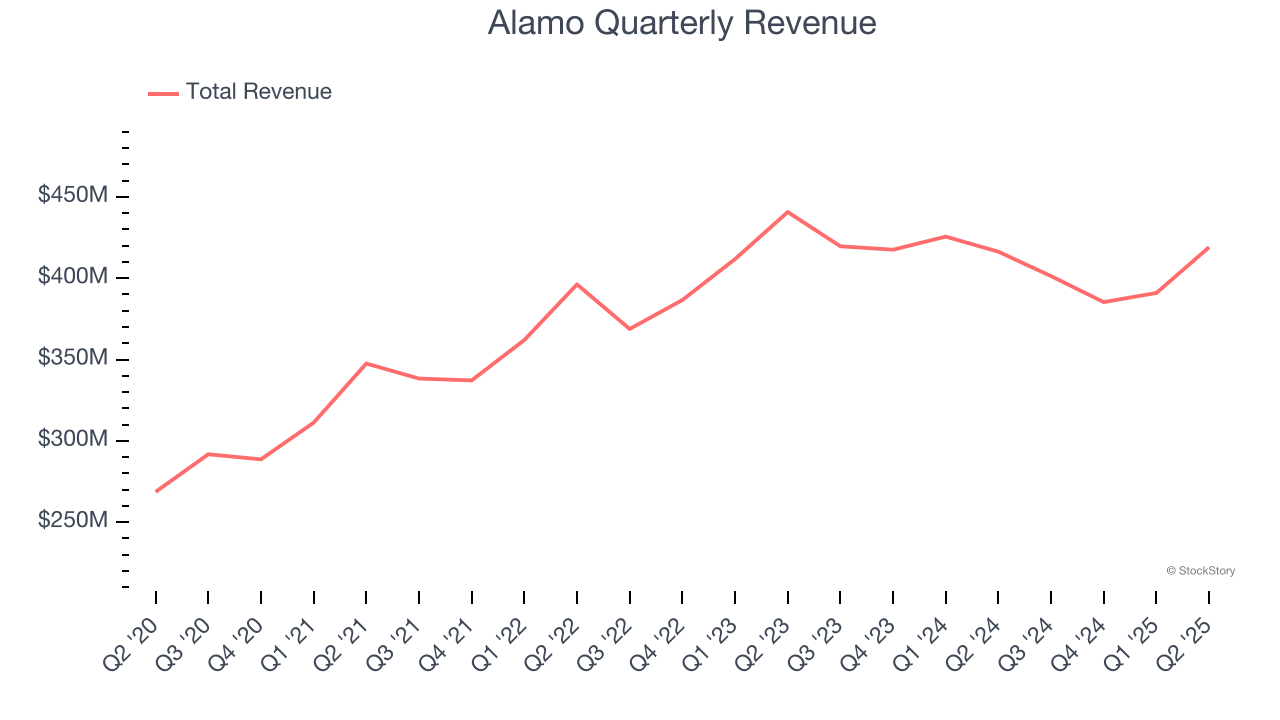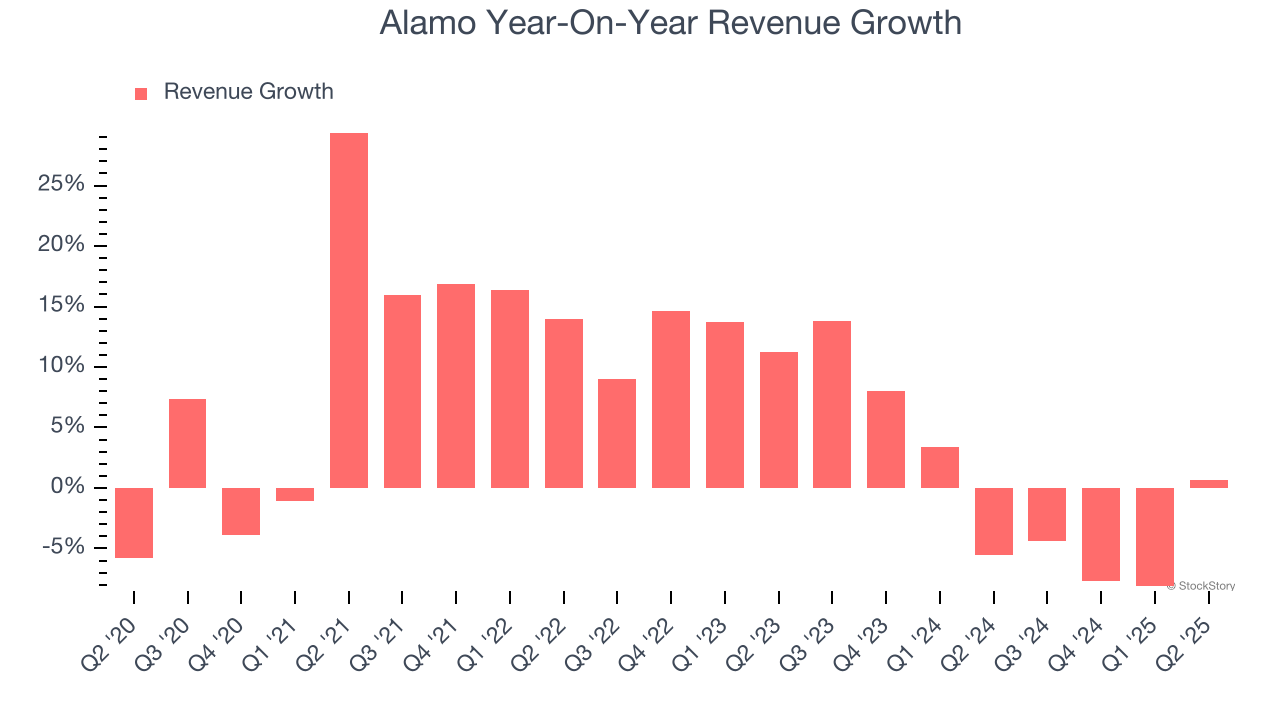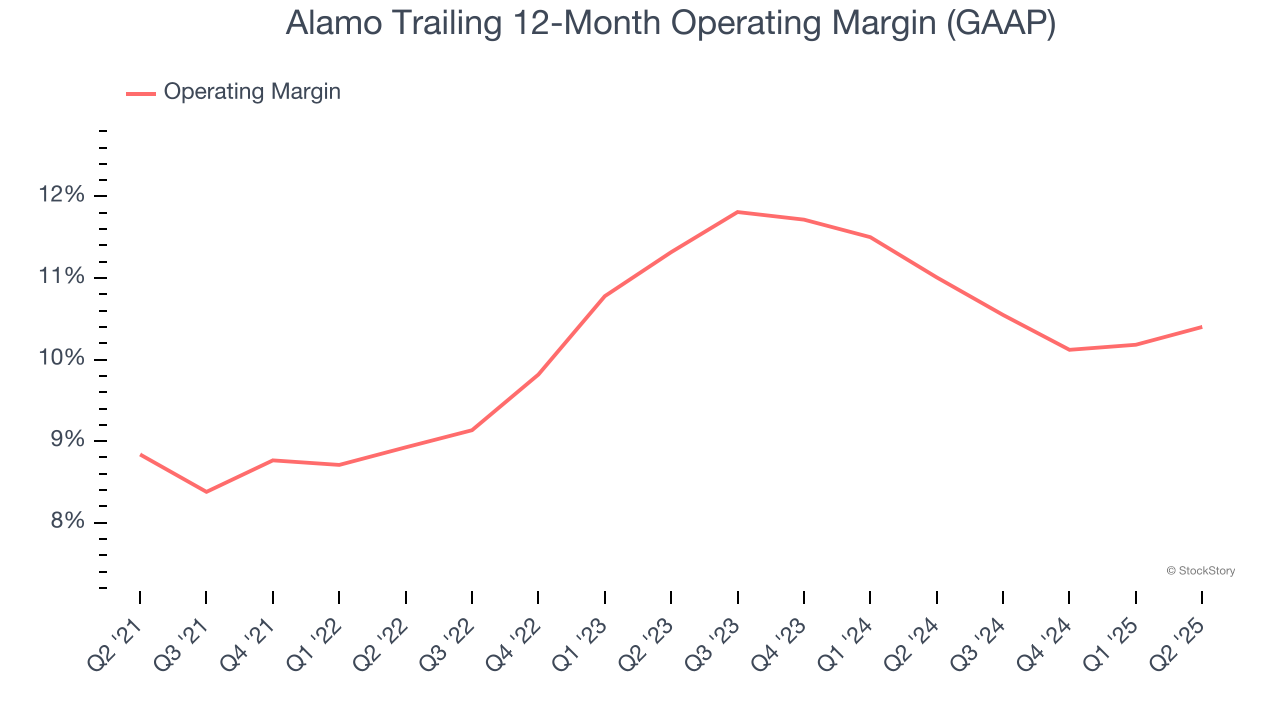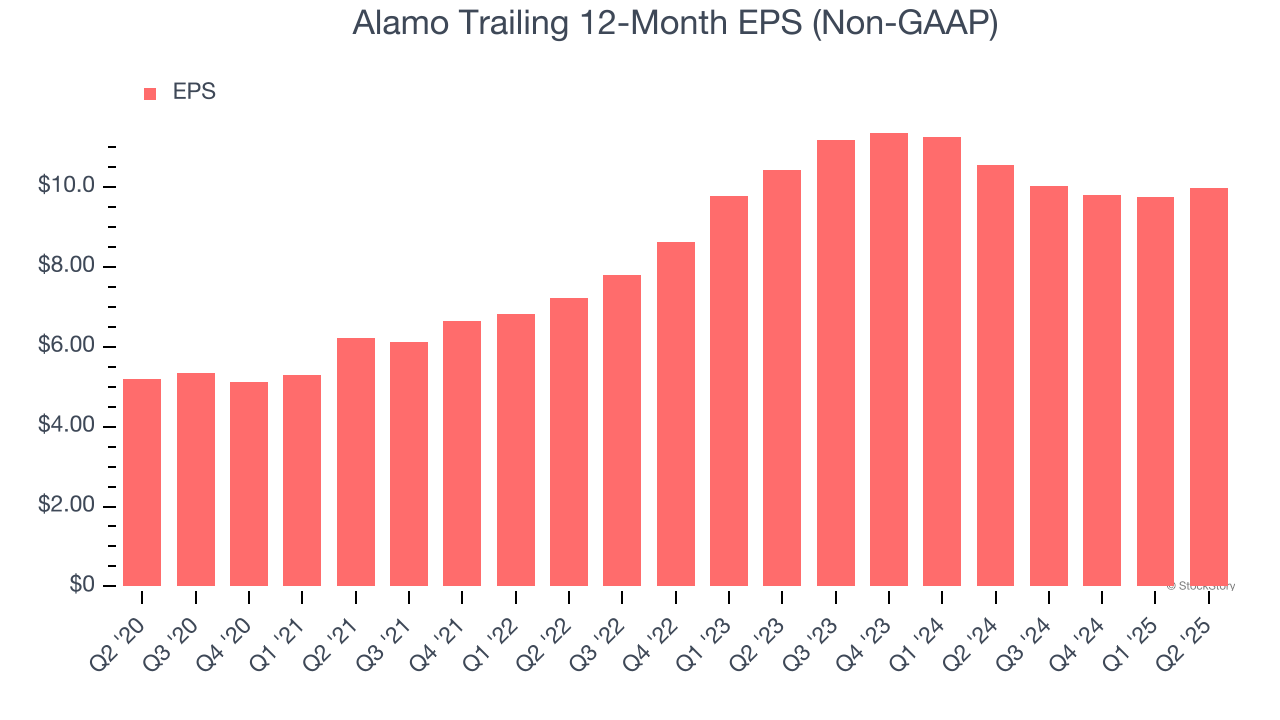
Specialized equipment manufacturer for infrastructure and vegetation management Alamo Group (NYSE: ALG) reported Q2 CY2025 results topping the market’s revenue expectations, but sales were flat year on year at $419.1 million. Its non-GAAP profit of $2.57 per share was 5.2% below analysts’ consensus estimates.
Is now the time to buy Alamo? Find out by accessing our full research report, it’s free.
Alamo (ALG) Q2 CY2025 Highlights:
- Revenue: $419.1 million vs analyst estimates of $409.5 million (flat year on year, 2.4% beat)
- Adjusted EPS: $2.57 vs analyst expectations of $2.71 (5.2% miss)
- Operating Margin: 11.2%, in line with the same quarter last year
- Backlog: $687.2 million at quarter end
- Market Capitalization: $2.72 billion
Jeff Leonard, Alamo Group's President and Chief Executive Officer commented, "The Company's solid second quarter results reflected improved operating margin performance. The results were primarily driven by sustained strong demand from governmental agencies and specialty contractors for products offered by the Industrial Equipment Division, coupled with encouraging sequential recovery in markets served by the Vegetation Management Division. While consolidated net sales growth was modest compared to a strong prior year second quarter, sequential improvement exceeded 7%.
Company Overview
Expanding its markets through acquisitions since its founding, Alamo (NSYE:ALG) designs, manufactures, and services vegetation management and infrastructure maintenance equipment for governmental, industrial, and agricultural use.
Revenue Growth
A company’s long-term performance is an indicator of its overall quality. Any business can have short-term success, but a top-tier one grows for years. Over the last five years, Alamo grew its sales at a mediocre 6.7% compounded annual growth rate. This fell short of our benchmark for the industrials sector and is a tough starting point for our analysis.

We at StockStory place the most emphasis on long-term growth, but within industrials, a half-decade historical view may miss cycles, industry trends, or a company capitalizing on catalysts such as a new contract win or a successful product line. Alamo’s recent performance shows its demand has slowed as its revenue was flat over the last two years. We also note many other Agricultural Machinery businesses have faced declining sales because of cyclical headwinds. While Alamo’s growth wasn’t the best, it did do better than its peers. 
This quarter, Alamo’s $419.1 million of revenue was flat year on year but beat Wall Street’s estimates by 2.4%.
Looking ahead, sell-side analysts expect revenue to grow 5.1% over the next 12 months. While this projection implies its newer products and services will catalyze better top-line performance, it is still below the sector average.
Unless you’ve been living under a rock, it should be obvious by now that generative AI is going to have a huge impact on how large corporations do business. While Nvidia and AMD are trading close to all-time highs, we prefer a lesser-known (but still profitable) stock benefiting from the rise of AI. Click here to access our free report one of our favorites growth stories.
Operating Margin
Alamo has managed its cost base well over the last five years. It demonstrated solid profitability for an industrials business, producing an average operating margin of 10.2%. This result was particularly impressive because of its low gross margin, which is mostly a factor of what it sells and takes huge shifts to move meaningfully. Companies have more control over their operating margins, and it’s a show of well-managed operations if they’re high when gross margins are low.
Looking at the trend in its profitability, Alamo’s operating margin rose by 1.6 percentage points over the last five years, as its sales growth gave it operating leverage.

In Q2, Alamo generated an operating margin profit margin of 11.2%, in line with the same quarter last year. This indicates the company’s cost structure has recently been stable.
Earnings Per Share
We track the long-term change in earnings per share (EPS) for the same reason as long-term revenue growth. Compared to revenue, however, EPS highlights whether a company’s growth is profitable.
Alamo’s EPS grew at a remarkable 13.9% compounded annual growth rate over the last five years, higher than its 6.7% annualized revenue growth. This tells us the company became more profitable on a per-share basis as it expanded.

We can take a deeper look into Alamo’s earnings to better understand the drivers of its performance. As we mentioned earlier, Alamo’s operating margin was flat this quarter but expanded by 1.6 percentage points over the last five years. This was the most relevant factor (aside from the revenue impact) behind its higher earnings; interest expenses and taxes can also affect EPS but don’t tell us as much about a company’s fundamentals.
Like with revenue, we analyze EPS over a shorter period to see if we are missing a change in the business.
For Alamo, its two-year annual EPS declines of 2.1% mark a reversal from its (seemingly) healthy five-year trend. We hope Alamo can return to earnings growth in the future.
In Q2, Alamo reported adjusted EPS at $2.57, up from $2.35 in the same quarter last year. Despite growing year on year, this print missed analysts’ estimates, but we care more about long-term adjusted EPS growth than short-term movements. Over the next 12 months, Wall Street expects Alamo’s full-year EPS of $9.98 to grow 16.7%.
Key Takeaways from Alamo’s Q2 Results
We enjoyed seeing Alamo beat analysts’ revenue expectations this quarter. On the other hand, its EPS missed. Overall, this was a mixed quarter. The stock remained flat at $224.77 immediately after reporting.
Alamo’s latest earnings report disappointed. One quarter doesn’t define a company’s quality, so let’s explore whether the stock is a buy at the current price. What happened in the latest quarter matters, but not as much as longer-term business quality and valuation, when deciding whether to invest in this stock. We cover that in our actionable full research report which you can read here, it’s free.



